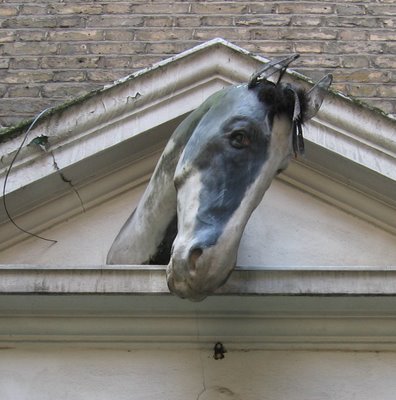Humiliation and the meaning of images: the Israel-Turkey connection

Issues of aesthetics and represntation are always central to Middle Eastern politics, but usually these issues are not problematised publicly, in the official discourse. The recent operetta of public shaming between Israel and Turkey supplied such a rare occasion. I am here not interested so much in this actual pathetic episode as in its implications for a theory of representation.
The story goes as follows: the Israeli Deputy Foreign Minister Danny Ayalon called the Turkish ambassador to Jerusalem over an anti-Israeli Turkish TV series. The repriminad was delivered in front of reporters' cameras . The Deputy Foreign Minister pointed out to the media in Hebrew that there is no handshake; that the ambassador was seated on a low sofa, while his Israeli hosts were sitting on a higher chair; and that only the Israeli flag was on the table.
The scene was aired on TV the same evening, and Ayalon's comments could be heard loudly. Almost immediately Turkey expressed outrage and threatened to call the ambassador back unless an official apology is received from Israel. Ayalon quickly gave in. The whole episode, that was supposed to show Israel standing up to defend its honour, became a farce.
When interviewed, Ayalon first tried to distance himself from his comments: this was not about the "stage set" of the sofa, it was about the matters at stake, he said to Israeli channel 2. Later, he tried to blame the reporters: "I didn't think it was being recorded, and if it was - I didn't think it would be aired with sound."
And here's comes the interesting part:
My intention wasn't to humiliate, but to send a visual message. The ambassador didn't feel humiliated either - only once reporters started calling him. The picture was aimed at the Turks, to send them a message.
So, of course, the media are to blame, because they are the ones who broadcasted Ayalon's comments and made them into the message. While according to Ayalon, the picture itself was the message. That is to say, unlike Susan Sontag, Ayalon claims that pictures have meanings that are inherent to them, and require no further elaboration. No need for a label, no need for further text: the image says it all. The Turkish public would register the severity of the Israeli repriminad through the low sofa, the lack of a flag, etc, whether conciously or sub-consciously, and Israel's outrage will be communicated - within the frame.
Furthermore: the power of the image was detracted by the broadcasting of Ayalon's comments. Not only because they were superflous: but because the comments exposed the staging of the scene, denying it of its transparency. Rather than an image of pure meaning, it became a stage set, a theatrical ploy. The whole thing suddenly looked like bad makeup.
The problem is of course that it was Ayalon himself who manifested his mistrust in the power of images, by pointing out to the reporters the choreography of humilation: the important elements of the seating arrangement, the lack of flag etc. He obviously felt the need to explain, to elaborate. He planned an almost Ottoman scene of shaming a foreign ambassador in public, but he did not trust his own staging, his own directing. He had to tell them what it meant.
Ayalon, of course, denies: he tried to defend his theory of aesthetic representation (the image is the message) by insisting that his comments were not purely necessary for the understanding of the picture. The comments, he said, were nothing but a "comic relief".
Comic relief? A strange way to put it, and it entirely fails to convince, because Ayalon did not smile or laugh in the picture -was that not the whole point, to look sombre and angry. Comic relief? This strange expression only exposed once more the theatricallity of the scene, its "candid camera" quality, and the farce of trying to look like medieval despot when you a pathetic deputy Foreign Minister.
The penache for public humiliation is perhaps rediculous, but it does suggest certain resemblances between Ayalon and his boss, Lieberman, to Italian fascists.
But on a more general level, I think Ayalon's attempt in staging meaning and its complete failure is indicative of something important. Especially regarding the Israeli - Palestinian conflict, people tend to think that everything is already in the frame: they show you images, which tell the whole story, they say; and then they insist on explaining those images, never noticing that by explaining, they betray the failure of their own transparent argumenents.


0 Comments:
Post a Comment
<< Home